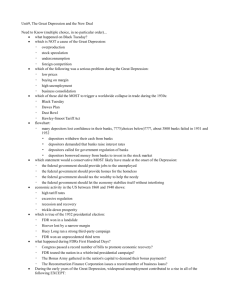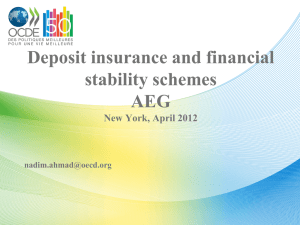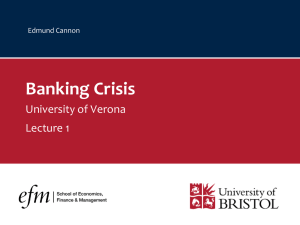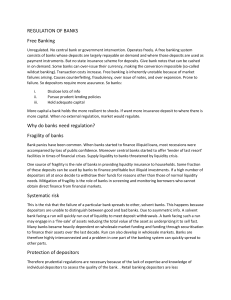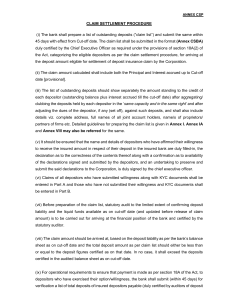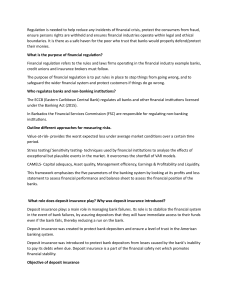Funding SourceS
advertisement
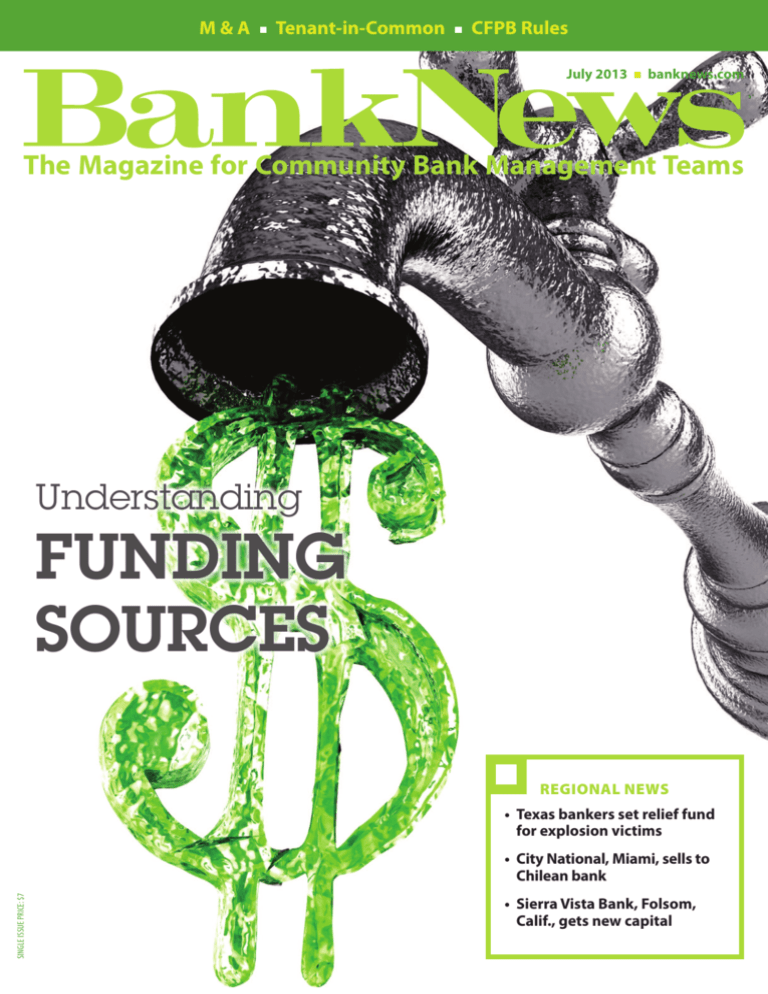
M & A Tenant-in-Common CFPB Rules July 2013 banknews.com The Magazine for Community Bank Management Teams Understanding Funding Sources regional news • Texas bankers set relief fund for explosion victims Single Issue Price: $7 • City National, Miami, sells to Chilean bank • Sierra Vista Bank, Folsom, Calif., gets new capital Understanding Funding Sources Image courtesy of Shutterstock/megainarmy By D. James Lutter Image courtesy of iStockphoto/greg801 I ncreased competition, market uncertainty, legislative reform and regulatory scrutiny continue to shape the way banks view funding. At the height of the financial crisis, banks scrambled to secure liquidity and build formal funding plans. Interest rates have since remained depressed, and significant amounts of money still sit on the sidelines. Consequently, banks are able to fund themselves primarily through core funding at the short end of the curve. There is still significant opportunity in the wholesale market, but the demand continues to decline due to conscious avoidance of wholesale funding. Banks would rather avoid regulatory burdens associated with wholesale funding whenever possible. The result is less diversification and missed funding opportunities. When loan demand increases and core funding migrates to other investment opportunities, without diversification, funding becomes an issue. Define Funding Options There are numerous core and non-core funding options available to banks. Core funding is often comprised of demand deposit accounts, negotiable order withdrawal accounts, savings accounts, money market accounts and certificates of deposit less than $100,000. Conversely, non-core funding is often sensitive to changes in interest rates. These types of accounts include brokered deposits, CDs greater than $100,000 and borrowed money. Overall sources of funding may include retail, corporate, municipal, negotiable CDs, federal funds, FHLB advances, Federal Reserve advances, bank notes, repurchase agreements and correspondent bank lines. Identify Which Options Are Available to Your Bank Once a bank has determined its most appropriate funding options, the next step is to identify the role each option will play within an operating and contingency funding plan. It is critical that diversification, credit sensitivity and concentration limits be included. A good test of these attributes can be identified through a S.W.O.T. analysis (strengths, weaknesses, opportunities and threats). For example, a S.W.O.T. analysis of a municipal depositor may look like the following: Strengths — A municipal depositor is typically local, with a predictable deposit cycle and can be a stable funding source. Weaknesses — Deposit capabilities can fluctuate and are cyclical, usually requiring some form of collateralization (per state statute or investment policy). Credit restrictions may also be present. Regulators are looking closely at bank funding policies to ensure proper controls are in place that adequately address the environment in which each bank operates. Opportunities — A municipal client can become a significant multifaceted relationship (through transaction activity, long-term banking service contracts, borrowing, safekeeping, etc.) Additionally, diversification among multiple municipalities may mitigate cyclicality risk. Threats — The general economic conditions may deteriorate, creating revenue shortfalls from a declining tax base or a delay in state or federal aid. Regulators are looking closely at bank funding policies to ensure proper controls are in place that adequately address the environment in which each bank operates. Testing sources on a regular basis allows a bank to readily access funds as needed while eliminating the element of surprise. Monitor and Maintain Funding Sources Two often overlooked factors that may put a bank under undue stress are the inherent risk characteristics of its funding sources and the evolving needs of those sources’ underlying investors and depositors. Gaining a comprehensive understanding of your funding sources and their relationships to investors and depositors provides information imperative to understanding how those deposits will respond under stress. Adverse effects to a bank’s credit profile will increase the bank’s cost of funds and may limit its ability to access funding. Different depositors have different investment criteria and yield expectations. A comprehensive understanding of these metrics will enhance the bank’s ability to price and access these funding sources and allow it to develop a risk-averse operating and contingency funding plan. Below are five questions that can help a bank build a solid understanding of its funding sources. 1.How does the market view my bank? Do I know the credit criteria my funding sources monitor (qualitative and quantitative)? What are the implications if the criteria are breached? 2.Do I understand my funding sources’ (depositors’) investment objectives (safety, liquidity, yield)? 3.Have I identified, and do I monitor the factors that could affect my ability to access various funding sources? 4.Does my funding source have concentration limits? 5.Have I documented each funding source’s role and communicated it to each source when applicable? Developing reliable, diversified funding sources is critical to the success of a funding plan. Through a process of identifying, defining and maintaining funding sources, a bank will gain an understanding of the issues surrounding funding planning and increase its knowledge of the deposit marketplace. A welldefined and well-executed plan will provide liquidity and interest rate management through a variety of economic cycles. BN D. James (Jim) Lutter is the senior vice president of trading operations at PMA Financial Network Inc., Naperville, Ill. Contact him at 630-657-6400 or JLutter@pmanetwork.com.






